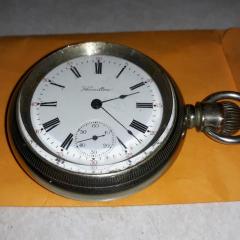-
Recently Browsing
- No registered users viewing this page.
-
Topics
-
Posts
-
The entry jewel's not as bad but seems still too much lock. I do epilame the escape wheel and pallet jewels, then run dry for about 15 minutes, then put 9415 in exit jewel very little at a time and check with backlight how the oil's distributed. Another question is about capped escape wheels. Should I somehow wear the epilame off the pivots before installing the wheel? I normally let the escape wheel run dry for that said 15 minutes when there's no cap jewel.
-
Sometimes there's a certain place under the bezel where the case knife is supposed to be placed. In this borrowed pic there's a small crack at 3 o'clock.
-
Hi my fellow forum addicts, I'm writing this as I seem to have a hole in my knowledge (probably one of many!) I seem to have a horrible time removing bezels from watches. I am talking about the rotating type on sports/diving watches. I see many videos where the guy on screen barely inserts the case knife under the bezel and with no effort it pops off easily, then at the end it clicks back into place by hand with no effort. I am sure that part of this is due to skillful video editing, but I seem to wrestle with them, I have tried case knives and even when using the tool below, I tighten it up in several positions and nothing happens. On a many occasions I have even warped the bezel in my attempts to remove it. Similarly, I have issues replacing bezels after cleaning etc. and often they have to be replaced using a press tool and inevitably are far too tight and will not rotate or loose to the point where they fall off or loose their click (perhaps due to micro warping when I tried to remove??). It is now to the point where I am actually avoiding watches with bezels as my success rate with them is terrible......please help!! In short I am asking: What am I doing wrong? What is the best method for removing bezels - how do you do it? What is the best method for replacing bezels - how do you do it? Any tips or tricks? Thanks
-
By ManSkirtBrew · Posted
Amplitude still seems low, but I'm going to let it run in a bit and revisit. Meanwhile, got the first layer of the calendar works together and made sure the date ring snaps to both in quickset and regular setting. The mechanism is pretty cool, so I took a video.
-







Recommended Posts
Join the conversation
You can post now and register later. If you have an account, sign in now to post with your account.
Note: Your post will require moderator approval before it will be visible.